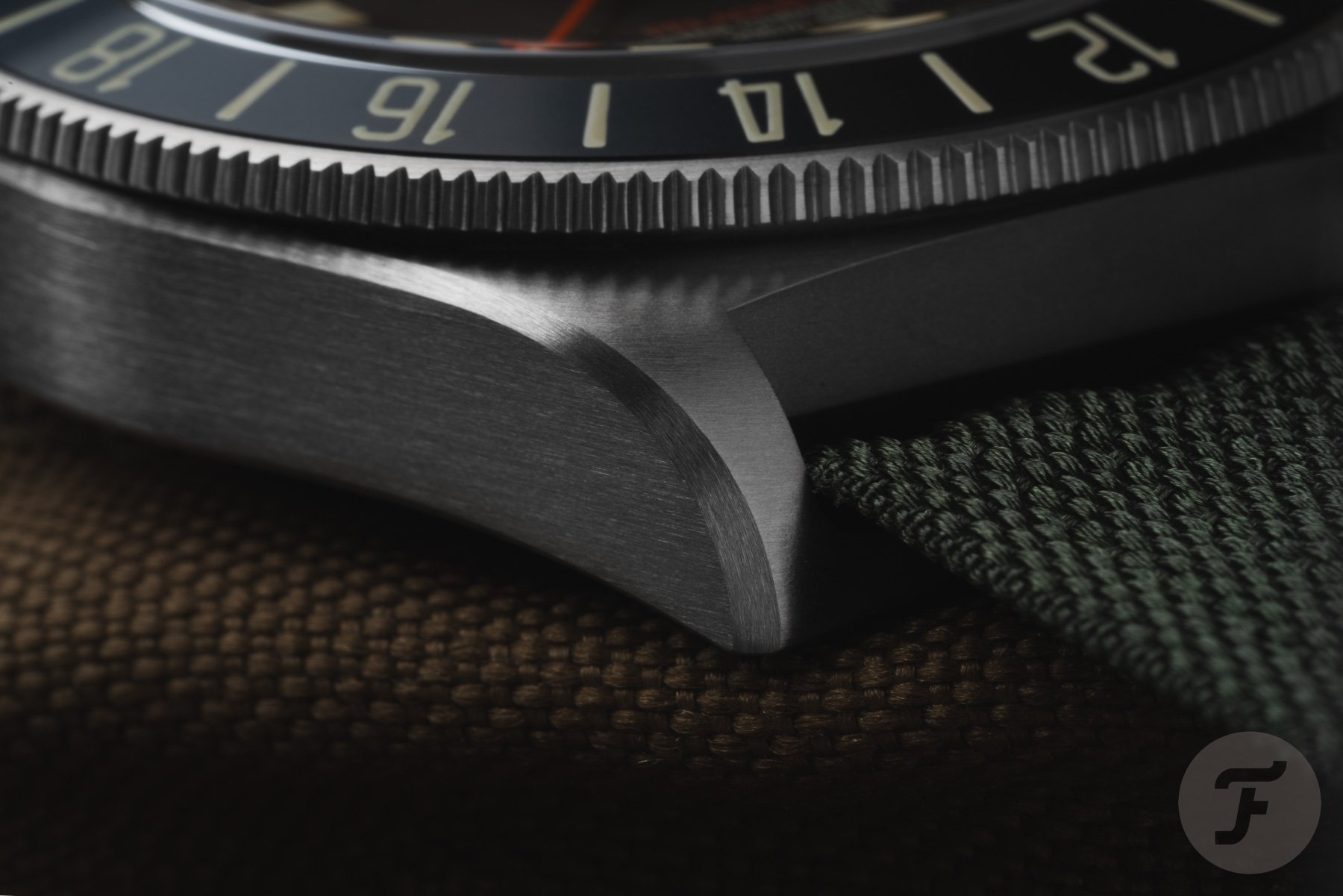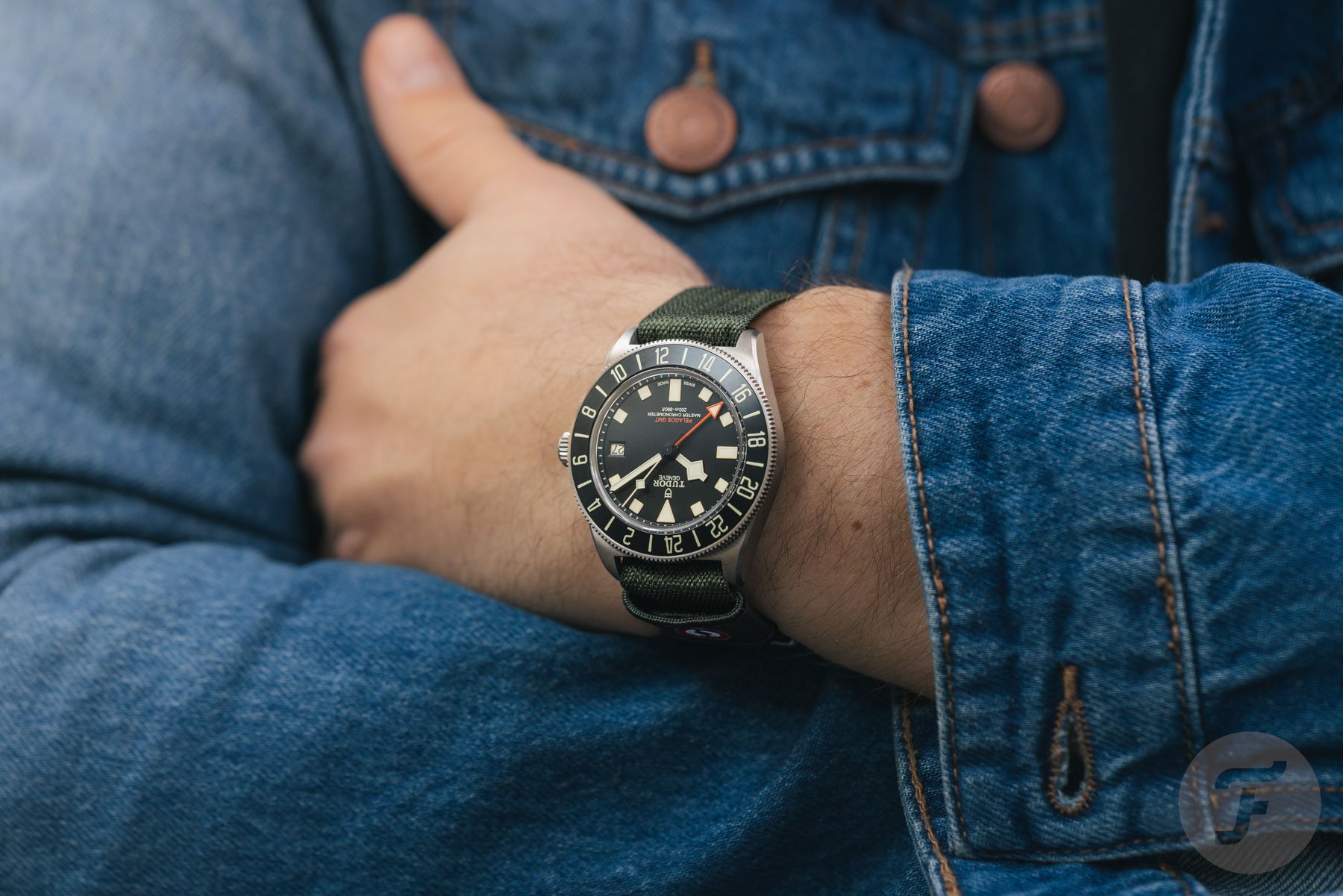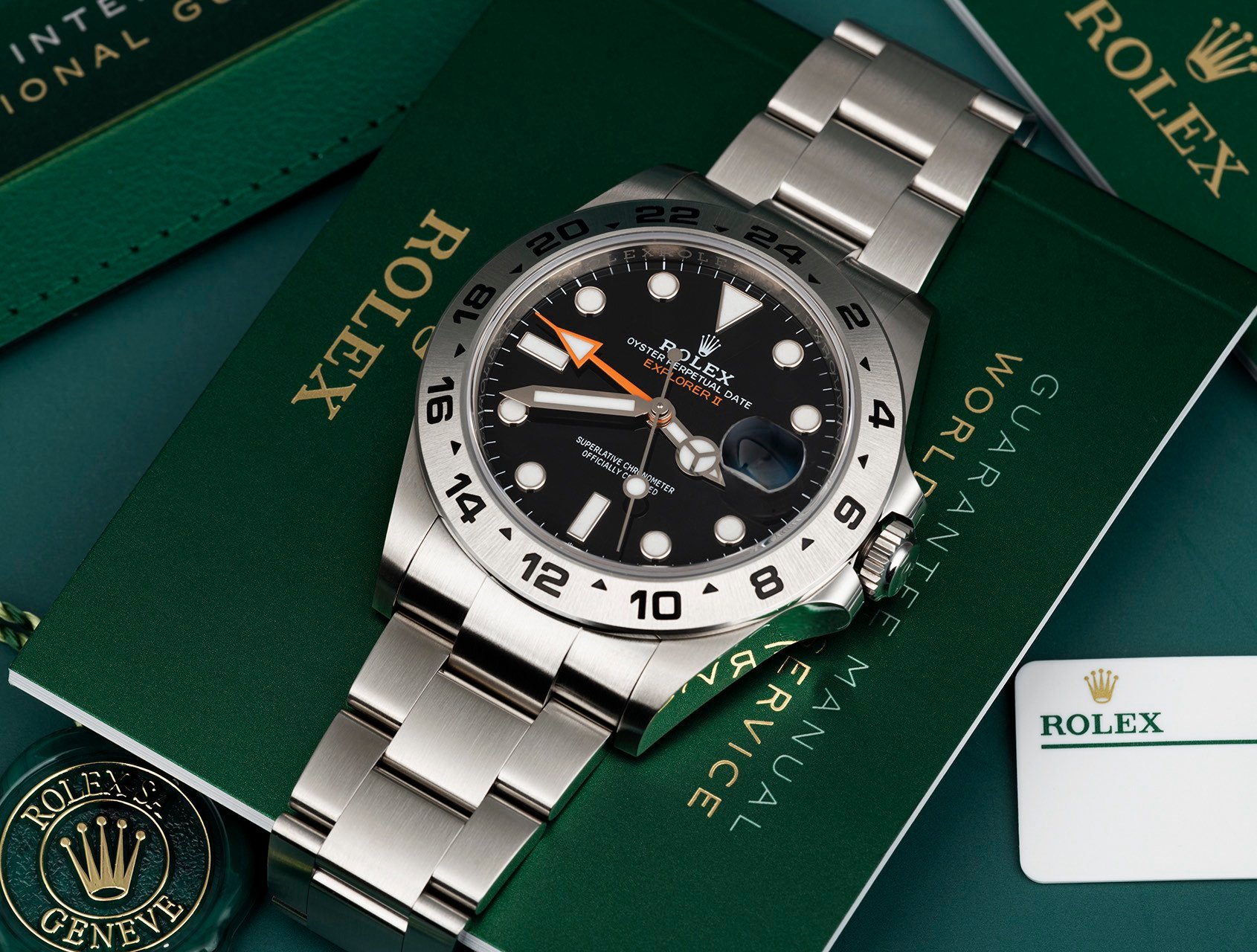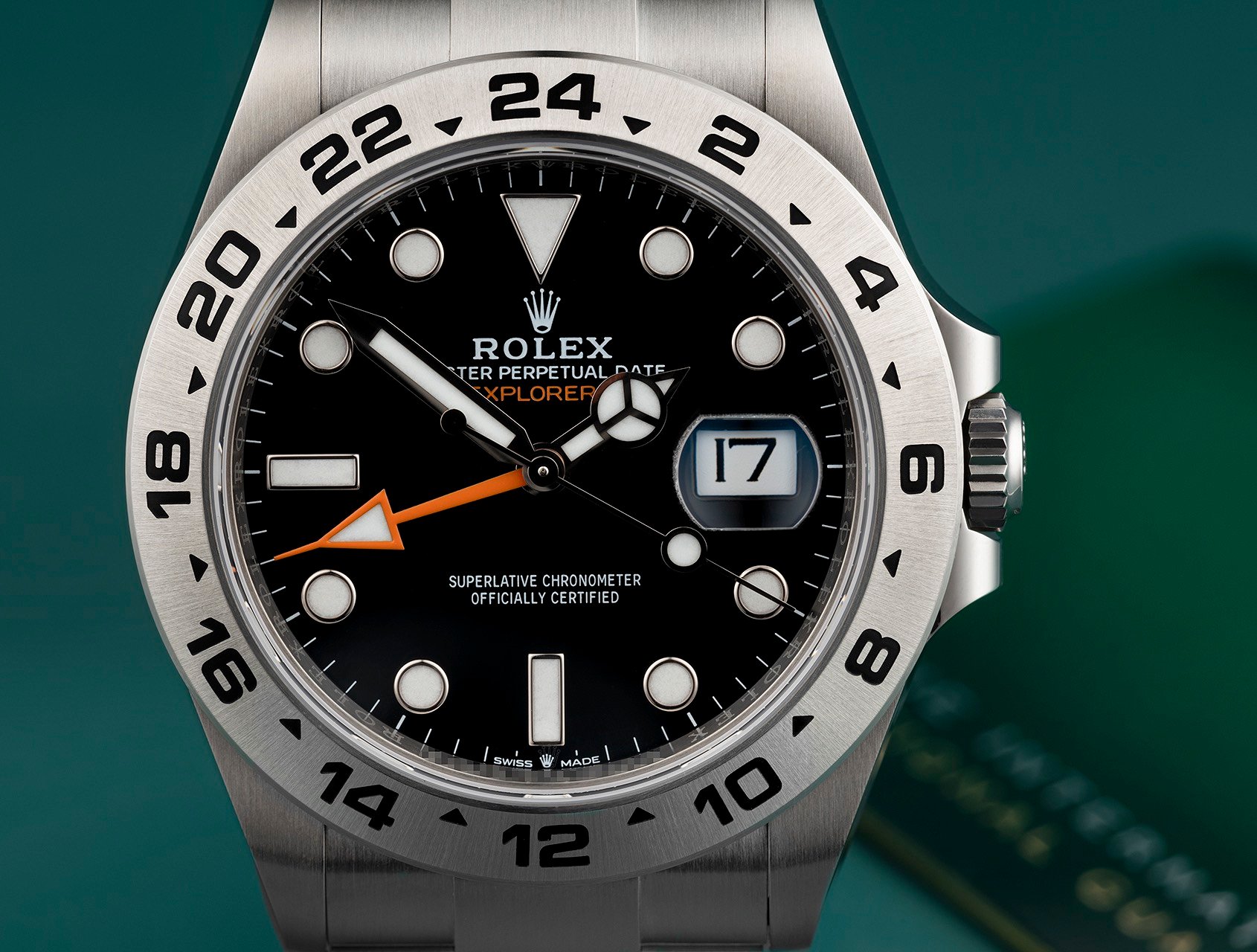Sunday Morning Showdown: Tudor Pelagos FXD GMT Vs. Rolex Explorer II Ref. 226570
It’s Sunday morning, so it’s time for your weekly dose of early-morning caffeine! Pour yourself a hot cup of coffee, grab a seat, and let’s get going. This week, Jorg and Mike return to the battlefield with another interesting duo of contenders. We read your comments, dear Fratelli! Today’s matchup is a much-requested battle that will finally become a reality. It puts the Rolex Explorer II ref. 226570 up against the recently released Tudor Pelagos FXD GMT. Can the new Tudor beat its bigger brother? After our writers make their cases, it’s over to you to vote for your favorite!
Today’s battle is a classic matchup of Rolex and Tudor. We have seen quite a few of these in our Sunday Morning Showdown series over the past few years. While a Rolex victory might be the logical outcome, it’s not always that simple. A famous Tudor win that was a total surprise was the Pelagos 39 beating the Rolex Submariner ref. 14060. Rolex has won all the other battles, but the margin was almost always within 10%. It makes these Tudor-versus-Rolex battles some of the closest we have seen over the years. We expect it to be no different this time. Jorg picked the Tudor Pelagox FXD GMT he reviewed not too long ago, while Mike selected the Rolex Explorer II ref. 226570. Let’s find out what both men have to say before we hand it over to you to decide which of the two will triumph.
Last week, on Sunday Morning Showdown…
Before we do, let’s quickly look back at last week’s battle. In last Sunday’s showdown, Thomas’s Echo/Neutra Rivanera won with a clear 73% of the votes. It left Daan on the losing end once again with just 27% of the votes. In the comments section, quite a few people quickly pointed out that they liked both watches and complimented both brands for coming up with the two models. But when pushed to a vote, the majority would pick the Rivenera, and there was a substantial number of people who hinted at either buying or wanting to buy the watch. It shows the tremendous popularity of the Echo/Neutra Rivanera, which will also make it onto several of our writers’ year-end lists. With that out of the way, let’s hand it over to Mike and Jorg to make their cases in this week’s battle. Gentlemen, the floor is yours!
Jorg: Tudor Pelagos FXD GMT “Zulu Time”
Here we are again, Mike! Once more, I have picked the underdog in a battle against a Rolex. But I am reasonably confident that my Pelagos FXD GMT has a shot against your Explorer II. I was fortunate enough to go hands-on with the Tudor and write an article about my findings with the watch. In my lengthy piece, I explained that I while wanted to fall in love with the new Pelagos, it didn’t end up being the love story I’d hoped for. Nevertheless, I would pick this over the current Rolex Explorer II any day of the week. Let me explain why.
First, let me point out why I would not pick the Explorer II because that answer is a lot simpler. I love the Explorer II lineage a lot. It’s one of my favorite Rolex lines, and I deeply admire the classic “Freccione,” the ref. 16550 “Cream” dial, and the black-dialed version of the ref. 16570, which is a modern classic in my book. But ever since Rolex decided to increase the size from 40mm to 42mm, I’ve had issues with the Explorer II. It has lost a part of its charm because of it. The Explorer II has always been sort of an insider’s choice within the Rolex catalog. It’s never been the most obvious pick for a GMT, and a big part of its charm is in the watch’s utilitarian character.
The Explorer II is far from the utilitarian tool watch it once was
But the moment that Rolex increased the case size, the watch became more of a luxury statement piece than it ever aspired to be. Sure, it’s far from a glitzy GMT-Master II, but it’s too loud and in your face compared to its smaller predecessors. Looking at the current-generation Explorer II ref. 226570, it’s not just the larger case size that’s a problem. The 24-hour numerals on the bezel are also too “loud” and fight with the elements on the dial, mainly the indices. While it might still be somewhat of an insider’s pick among peers, it’s far from the ultra-tool watch that it once was in the Rolex collection.
Regular readers might raise an eyebrow reading this. If you have read my review of the Tudor Pelagos FXD GMT, you will know that I had a problem with the 24-hour scale on the bezel insert. But it’s for different reasons than my beef with the Explorer II. If there is one thing I can’t deny, it’s that Tudor made the Pelagos its line of modern tool watches, and that’s why I love it. What started as the brand’s series of modern divers has now grown into a range of super capable modern tool watches offering the charm that the Rolex has lost. The large numerals and markings on the bezel of the Pelagos FXD GMT find their roots in that functionality.
The Pelagos FXD GMT is a military tool watch at heart
As most of you will know, the new Pelagos FXD GMT was developed for the pilots of the Aéronautique Navale. If you consider its military purpose, you will understand how the large elements theoretically make it easy to read. But my gripe is not necessarily their size. It’s more related to the lack of dynamism. All the numerals and markings are all the same height, creating a rather massive image. The result is a fairly in-your-face version of the Pelagos that contrasts with the quieter regular FXD models. However, after wearing the watch for several days, I can say that it feels like a super capable tool watch that never compromises functionality. As such, the Pelagos FXD GMT has the appeal I am looking for.
If I give you some details, I’ll explain its military capabilities even better. Like most Pelagos models, the new GMT also features a lightweight titanium case, a matte black dial, and a matching ceramic bezel insert. The watch comes fitted with a single-pass army-green Marine Nationale strap, further enhancing the military feel. The Grade 2 titanium case measures 42mm in diameter, 52mm from lug to lug, and 12.7mm thick and features a satin-brushed finish.
It simply speaks to me more than the Explorer II
The matte black dial is adorned with beige markers, which, together with the green strap, turn up the military feel to the max. The characteristic markers and Snowflake hands are accompanied by an orange GMT hand. This creates a nice, cohesive overall image with plenty of contrast to perform its tasks flawlessly. Inside the case, you will find the updated caliber MT5652-U produced by Kenissi. It is a COSC- and METAS-certified flyer GMT movement with a 65-hour power reserve and an accuracy rating of 0/+5 seconds per day. With a thinner case and an improved movement, Tudor has impressively raised the stakes.
The brand has also done that without massive price spikes, which brings me to my last point — the €4,740 price of the Tudor Pelagos FXD GMT. It’s less than half the price of the Rolex Explorer II ref. 226570, which comes in at €10,050. Considering that price difference, I would not hesitate one second to go for the Tudor. It feels like the only real tool watch in this battle and offers the initial charm that made the Explorer II such a nice connoisseur’s choice. Now that title goes to the Tudor Pelagos FXD GMT. But I’m sure you have different thoughts about it, Mike…
Mike: Rolex Explorer II ref. 226570
I’ll throw this out there right away: I don’t think this is a fair fight. Aside from the fact that both models have a 24-hour hand and are owned by the same mother ship, these watches are in different leagues. Let’s start with one glaring detail that would keep me from buying the Tudor Pelagos FXD GMT no matter the competitor. Fixed strap bars are an absolute dealbreaker for me. They’re fine for a casual knock-around watch, but for nearly €5,000, they make the piece very one-dimensional.
But, hey, perhaps fixed strap bars don’t bother you, so I’d better keep writing to convince you why the Rolex Explorer II is the better option. Rolex introduced the visually similar Explorer II ref. 216570 in 2011, and I envisioned adding one to my collection right away. The return of the famed orange hand from the original reference 1655 after 26 years of red-handed references was a big deal. Unfortunately for me, the watch grew from 40mm to 42mm and is too large for my thin wrist.
The original look that inspires copycats
That doesn’t mean that it’s not a looker, though. All the classic Rolex elements exist on the current Explorer II. Bold, luminous indices with white gold surrounds and the Mercedes hour hand are here along with a glossy black or white dial. That’s also worth reiterating: the Explorer II offers dial options. Let’s also not forget the tool-like 24-hour bezel, which is an instantly recognizable Explorer II trait. Honestly, the bezel and the arrow hand are the benchmark design cues copied by numerous brands when creating similar watches.
Great dimensions
The 42mm Explorer II has a 50.1mm lug-to-lug, but with a 12.5mm thickness, it’s thinner than the Tudor Pelagos FXD GMT. Additionally, Rolex deviates from Tudor with case flanks that hide the thickness. Whereas the Pelagos FXD GMT looks like a vertical slab, the Explorer II sports gentle curvature on the profile. Let’s also remember that this watch has a bracelet. The Oyster is not just any bracelet, though. It’s still one of the best in the industry in terms of finishing, articulation, and overall comfort.
The 3285 is a gem of a movement
Tudor’s Kenissi MT5652-U is an accurate and METAS-certified movement. Indeed, I own a three-handed (only COSC-certified) version, and it keeps time wonderfully. With the Explorer II, though, buyers receive the proper in-house treatment. The chronometer-certified caliber 3285 automatic is a flyer GMT, which means that the 12-hour hand can be set independently. It also has 70 hours of power reserve, which outlasts the Tudor by five hours. Regarding accuracy, Rolex quotes -2 / +2 seconds per day, which is insane!
Time to choose
As Jorg mentioned, the Rolex Explorer II retails for €10,050. And yes, over the last two weeks, I’ve seen these watches for sale at ADs in London and Munich. So, is it worth spending more than double for the Rolex over the Tudor? That’s what you’ll need to tell us. I believe that the Rolex is a more grown-up and complete watch, but the Tudor is a fantastic watch with a great movement and loads of value. Which 24-hour model would you choose with your hard-earned money? Make sure to vote, and then tell us your reasons in the comments!















